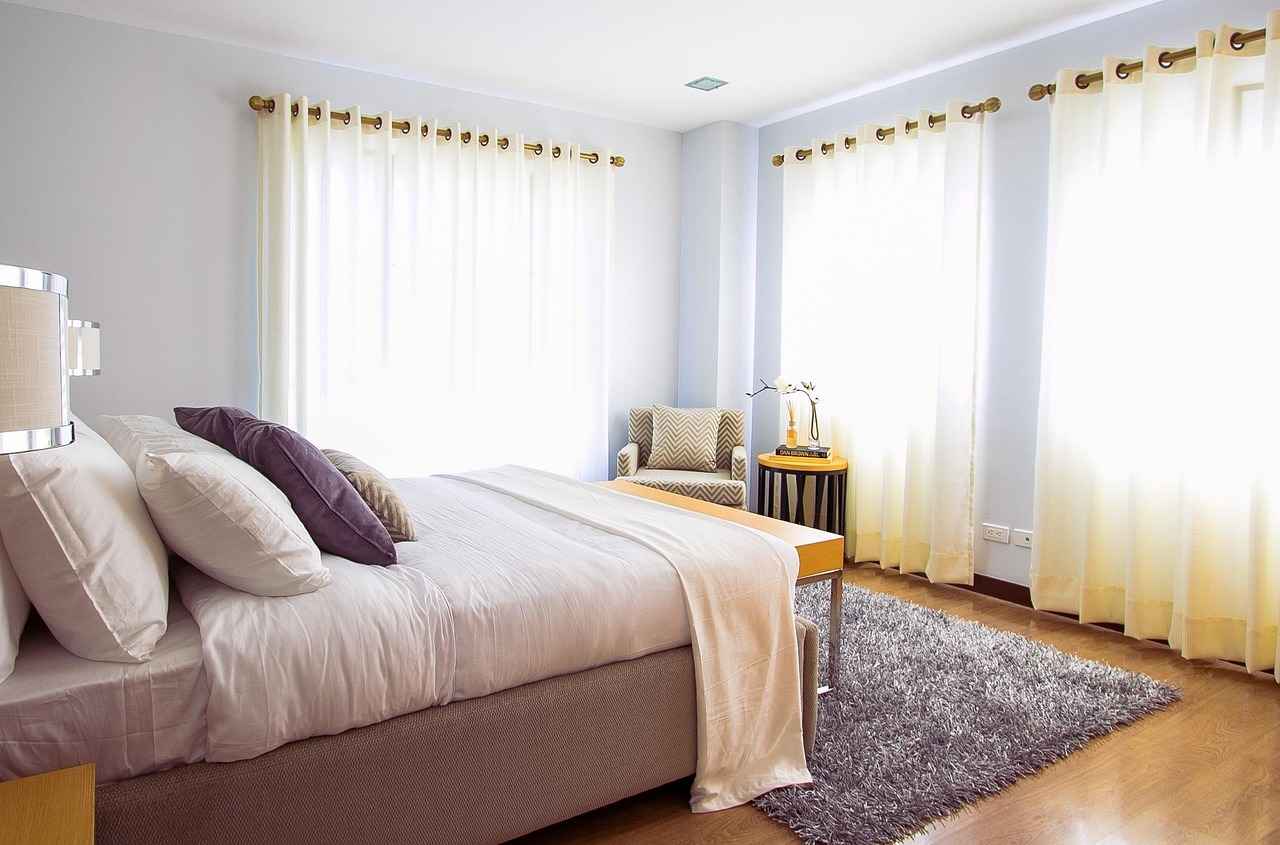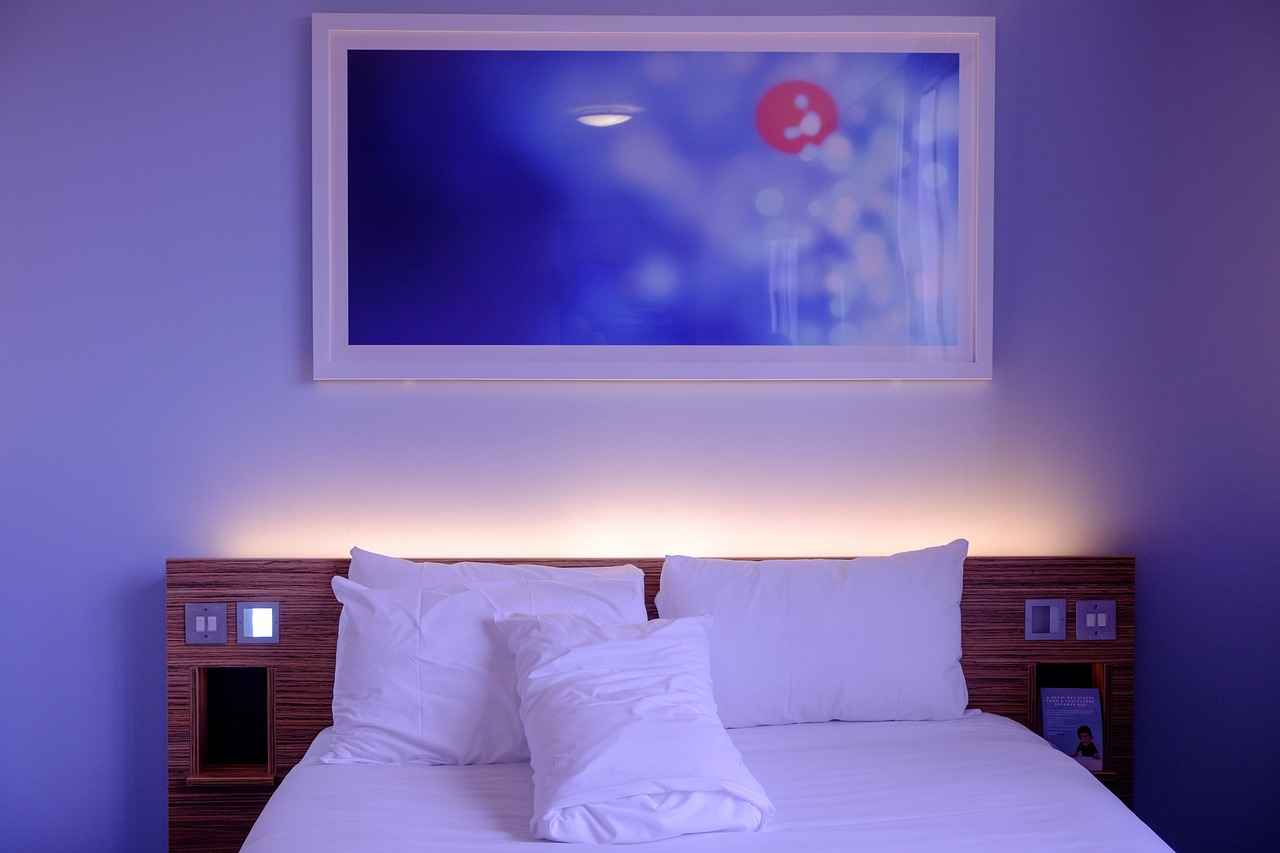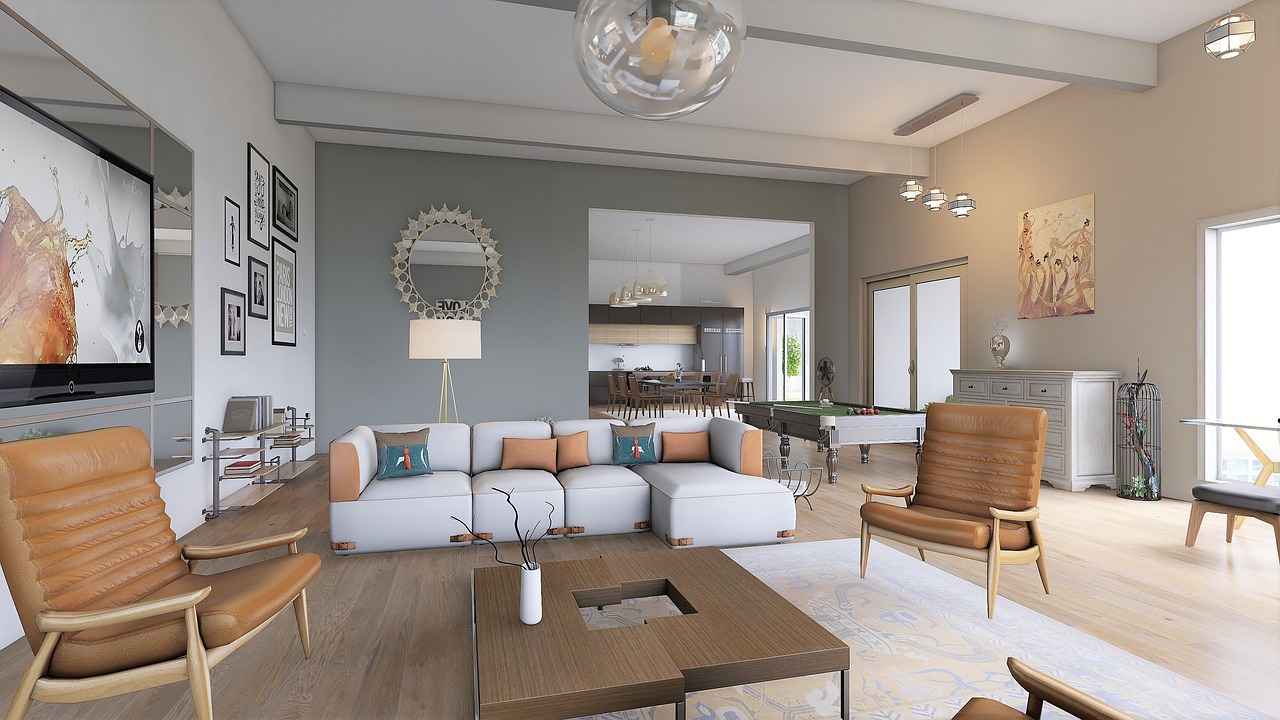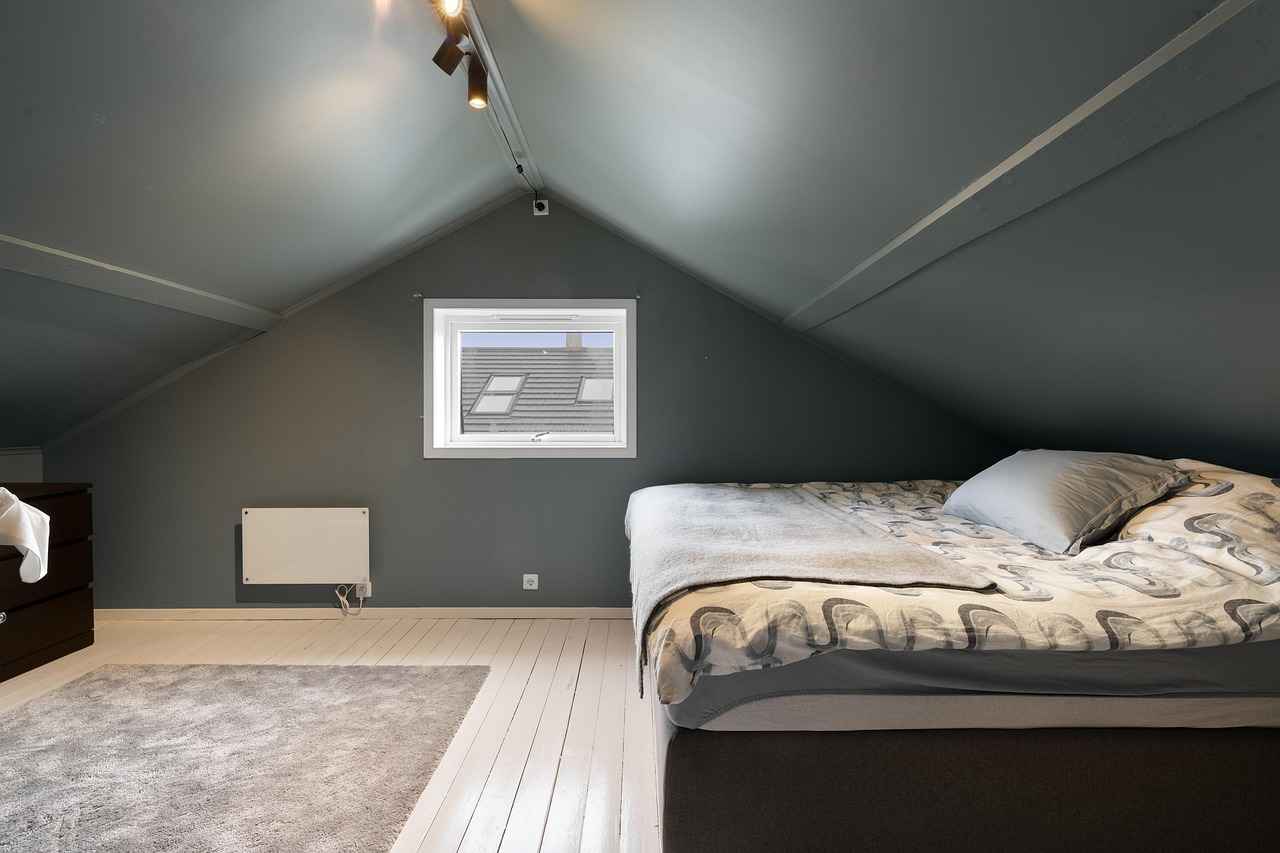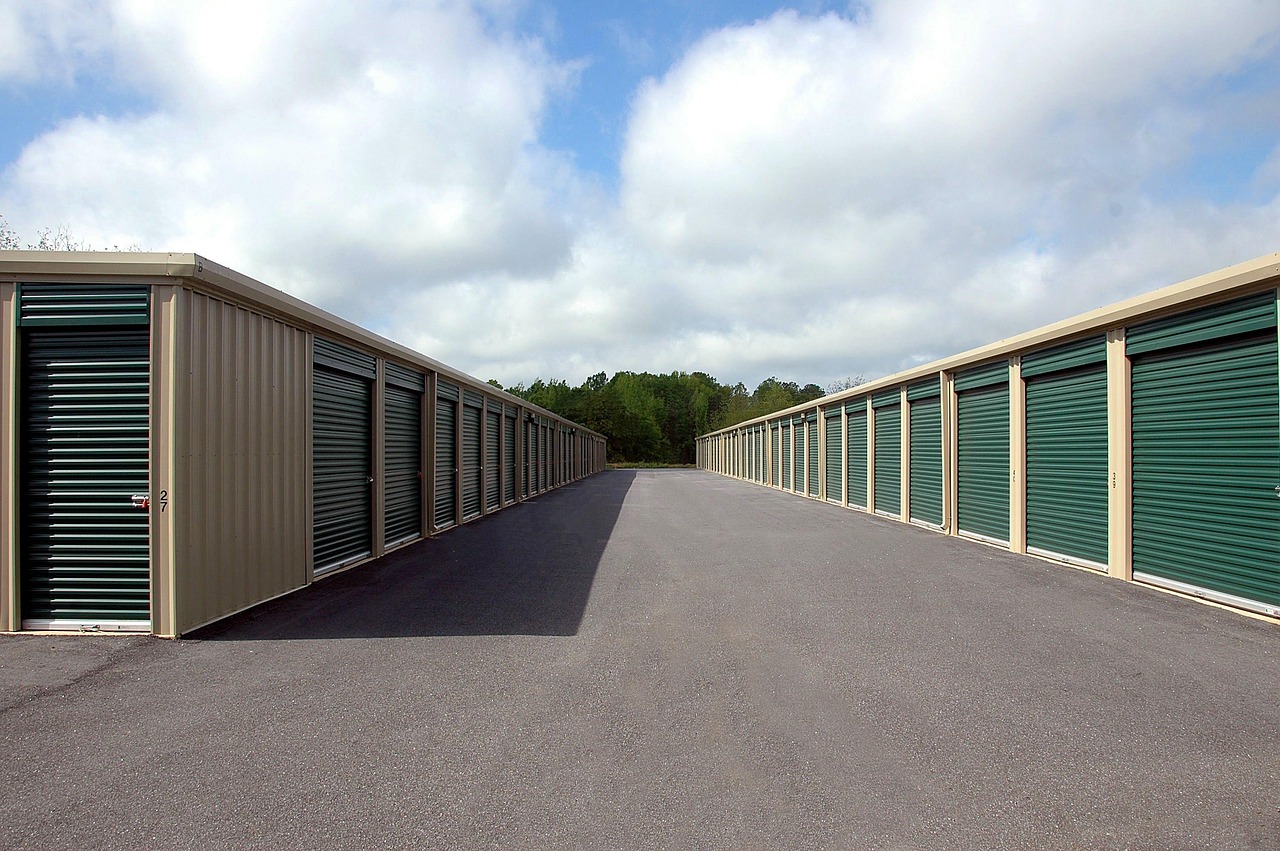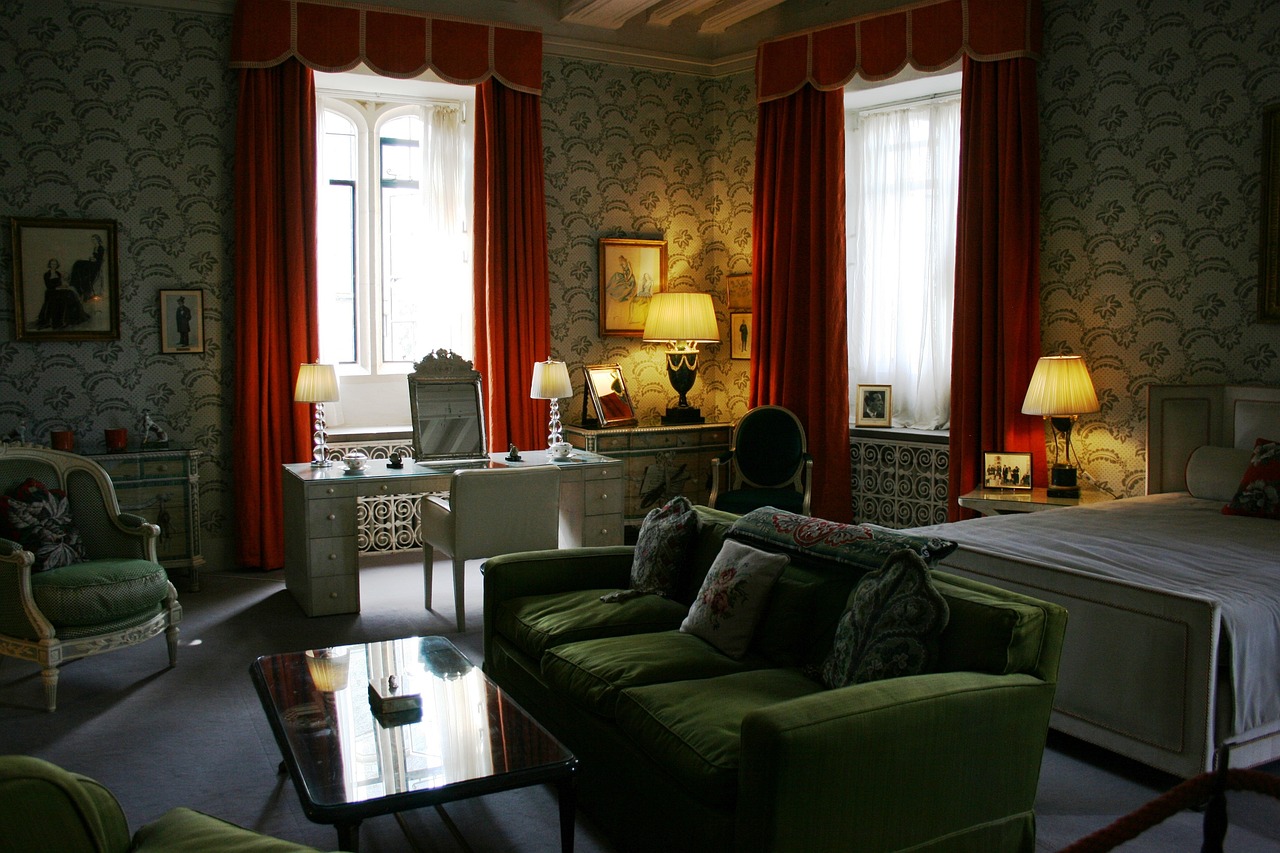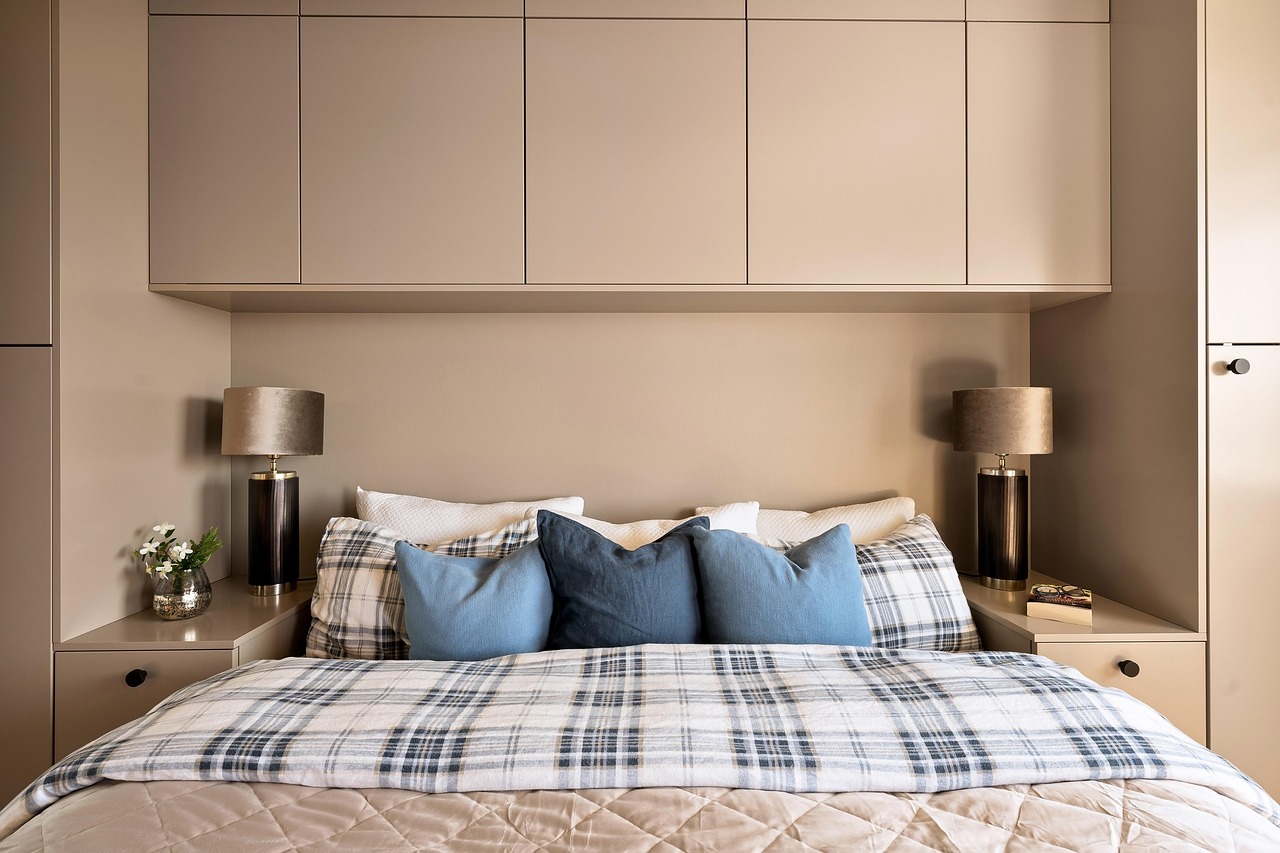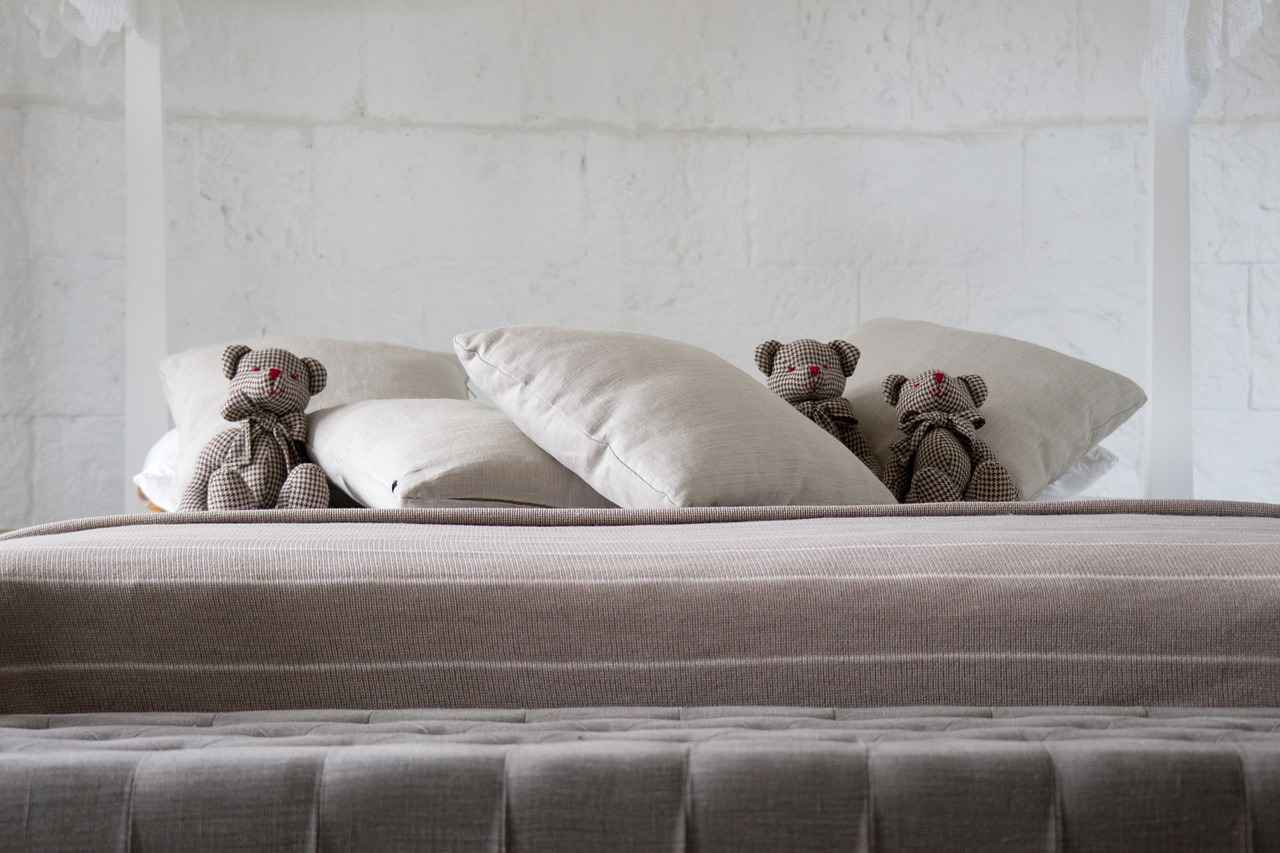What’s Trending in Bed Design for 2025?
As we look ahead to 2025, the world of bed design is evolving with exciting trends that combine innovation, style, and functionality. Modern aesthetics and comfort needs are at the forefront of these developments, making bedrooms not just places to sleep, but sanctuaries of relaxation and personal expression.
Modern Minimalism in Bed Design
One of the most significant trends is the rise of modern minimalism. This design philosophy emphasizes clean lines and simplicity, creating serene spaces that promote relaxation. Beds designed with minimalistic principles often feature low profiles, neutral color palettes, and a lack of excessive ornamentation, allowing for a calm and peaceful bedroom environment.
Smart Beds: The Future of Sleep Technology
Another exciting trend is the advent of smart beds, which are revolutionizing sleep technology. These innovative beds incorporate features that enhance comfort and monitor health. For instance, many smart beds can automatically adjust their firmness based on the sleeper’s preferences and even track sleep patterns to optimize rest.
- Adjustable Firmness Features: Users can customize the firmness of their bed, catering to personal preferences and specific health needs.
- Health Benefits of Adjustable Beds: These beds can alleviate common issues like back pain and sleep apnea by promoting better sleep posture and circulation.
- Integration with Sleep Apps: Many smart beds sync with mobile applications, offering insights into sleep quality and helping users make informed adjustments for improved rest.
Innovative Materials and Sustainability
As sustainability becomes increasingly important, bed designs are incorporating eco-friendly materials. Manufacturers are focusing on sustainable options that do not compromise on style or comfort, such as organic cotton, bamboo, and recycled materials, ensuring that modern beds are both beautiful and environmentally responsible.
Bold Colors and Patterns for 2025
In 2025, vibrant colors and unique patterns are set to make a statement in bedroom aesthetics. This trend allows for personal expression and creativity, moving away from the traditional muted tones.
- Embracing Earthy Tones: Warm earthy tones are trending, creating a calming atmosphere that fosters relaxation.
- Geometric Patterns in Bed Linens: Unique geometric patterns are being embraced in bed linens and upholstery, adding a modern touch to conventional designs.
Multi-Functional Beds for Small Spaces
With urban living on the rise, the demand for multi-functional beds is increasing. These designs maximize space, offering innovative solutions for compact living environments.
- Storage Solutions in Bed Design: Beds with built-in storage options, such as drawers or under-bed compartments, are practical for keeping bedrooms organized.
- Convertible Bed Designs: Convertible beds that can transform from a sofa to a bed are ideal for guest rooms or studio apartments, providing versatility and functionality.
Luxury and Comfort Trends in Bedding
As comfort remains a priority, luxury bedding materials are becoming essential for creating inviting sleep environments. High-thread-count sheets and plush comforters contribute to a cozy atmosphere.
- Investing in Quality Bedding: Quality bedding not only enhances sleep quality but also elevates overall bedroom aesthetics, merging comfort with style.
- Textural Variety in Bedding: Incorporating various textures, from silky sheets to fluffy duvets, adds depth and comfort, making the bed a focal point of relaxation.
In conclusion, the bed designs of 2025 are a reflection of modern needs and preferences. With trends leaning towards minimalism, smart technology, sustainability, and bold aesthetics, the future of bed design promises to enhance both functionality and style in our living spaces.
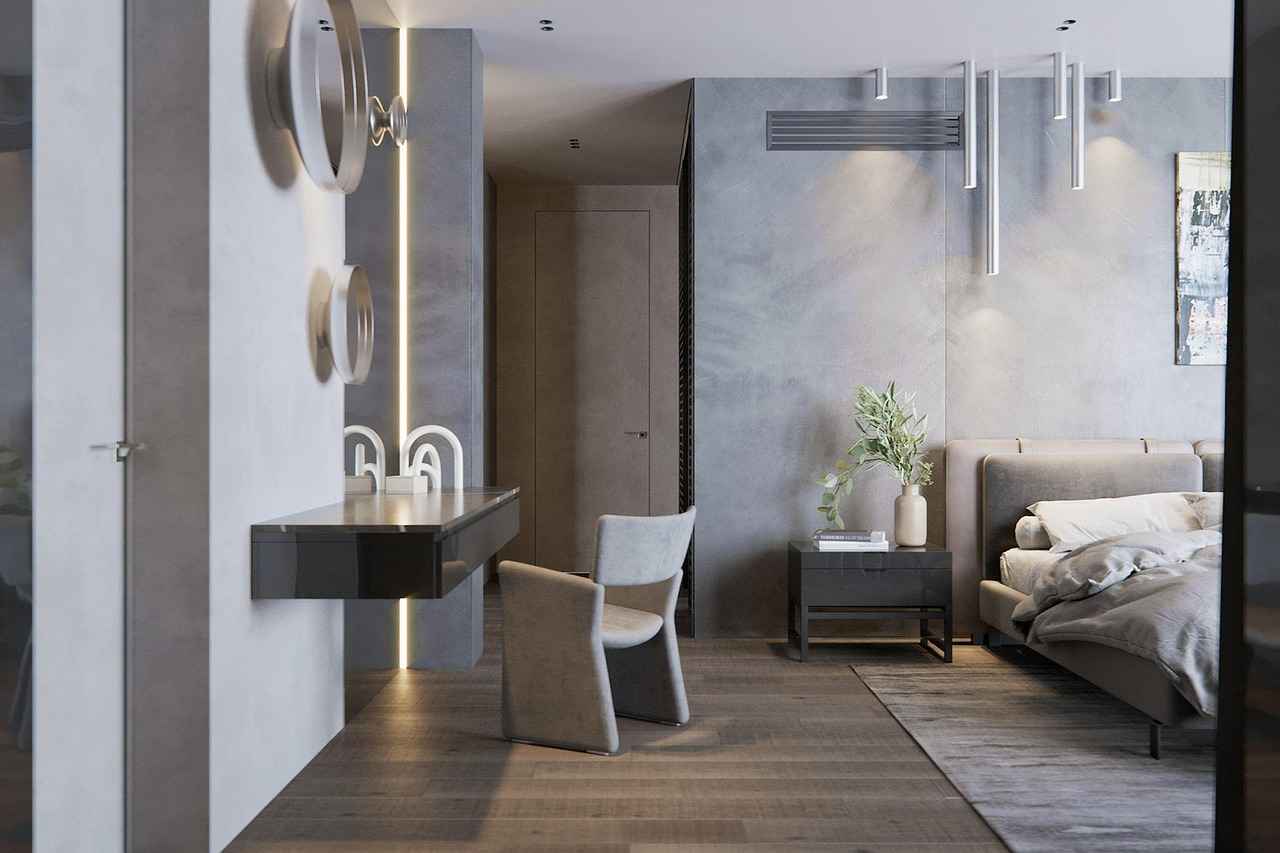
Modern Minimalism in Bed Design
Modern minimalism in bed design is rapidly becoming a defining trend for contemporary interiors. This design philosophy emphasizes clean lines, simplicity, and functionality, creating spaces that evoke a sense of calm and clarity. As we move towards 2025, the minimalist aesthetic is not just about reducing clutter but also about enhancing the overall experience of rest and relaxation.
The essence of minimalism lies in its ability to strip away the unnecessary, allowing for a more focused and serene environment. In bedroom design, this translates into beds that feature streamlined silhouettes and neutral color palettes. These elements work together to foster a tranquil atmosphere, perfect for unwinding after a long day.
One of the key aspects of modern minimalist bed design is the use of high-quality materials. Manufacturers are increasingly opting for natural materials such as wood, linen, and cotton, which not only enhance the aesthetic appeal but also promote sustainability. The choice of materials plays a crucial role in creating a harmonious space that resonates with a mindful lifestyle.
- Wooden Frames: Simple wooden bed frames in light or dark finishes can add warmth while maintaining a minimalist look.
- Neutral Bedding: Soft, neutral-toned bedding made from organic fabrics contributes to a peaceful environment.
- Functional Accessories: Minimalist beds often incorporate essential accessories that serve a purpose without overwhelming the design.
Furthermore, the layout of the bedroom is integral to minimalist design. A well-planned space allows for easy movement and promotes a sense of freedom. This can be achieved by positioning the bed as the focal point of the room, surrounded by carefully selected decor that complements the overall aesthetic.
Another significant trend within modern minimalism is the incorporation of multi-functional furniture. Beds that offer built-in storage solutions, such as drawers or shelves, not only save space but also help maintain a clutter-free environment. This functionality is particularly beneficial in urban living spaces, where maximizing every square foot is essential.
Moreover, minimalist designs are increasingly embracing technology. The integration of smart features into bed design is gaining traction, allowing users to customize their sleeping experience. From adjustable firmness to temperature control, these innovations enhance comfort while adhering to minimalist principles.
As we look ahead, the minimalist trend in bed design is set to evolve further, focusing on creating personalized sanctuaries that prioritize well-being. The emphasis on serenity and peace in these spaces is more crucial than ever, reflecting a broader societal shift towards mindfulness and intentional living.
In conclusion, modern minimalism in bed design is about more than just aesthetics; it’s about creating a holistic environment that nurtures the mind and body. By focusing on simplicity, functionality, and quality materials, designers are crafting spaces that not only look beautiful but also promote a healthier lifestyle. As we embrace this trend, it’s essential to remember that the ultimate goal is to create a sanctuary that feels both inviting and restorative.

Smart Beds: The Future of Sleep Technology
Smart beds are at the forefront of a sleep revolution, merging cutting-edge technology with traditional comfort to create a sleep experience that is both restorative and personalized. As we move into 2025, these beds are not just about luxury; they are designed to enhance health and well-being, making them an essential addition to modern bedrooms.
Smart beds utilize advanced technology to adapt to the user’s needs. They come equipped with sensors that monitor various factors such as heart rate, breathing patterns, and even movement throughout the night. This data is processed to provide insights into sleep quality, allowing users to understand their sleep cycles better.
One of the most appealing aspects of smart beds is their ability to adjust firmness. This feature is particularly beneficial for couples who have different preferences. Users can customize their side of the bed to achieve optimal comfort, whether they prefer a firmer surface for support or a softer one for relaxation.
Smart beds are not just about comfort; they offer numerous health benefits. By promoting better sleep posture, these beds can help alleviate issues like back pain and sleep apnea. Additionally, many models come with features that elevate the head or feet, which can aid in circulation and reduce snoring.
Many smart beds can connect to sleep apps, providing users with a comprehensive view of their sleep patterns. This integration allows for real-time adjustments based on the data collected. Users can receive personalized recommendations to improve their sleep hygiene, such as adjusting the room temperature or changing sleep positions.
Temperature regulation is another significant feature of smart beds. Many models include climate control technology that can cool or warm the mattress based on individual preferences. This ensures that users remain comfortable throughout the night, reducing the chances of waking up due to overheating or feeling too cold.
As sustainability becomes a priority, many smart bed manufacturers are focusing on eco-friendly materials. Beds made from organic cotton, natural latex, and recycled materials are becoming more common. Not only do these materials offer comfort, but they also appeal to environmentally conscious consumers.
- Sleep Tracking: Understand your sleep patterns with detailed analytics.
- Massage Functions: Some models offer built-in massage features to enhance relaxation.
- Smart Home Integration: Compatibility with other smart devices can create a cohesive living environment.
Looking ahead, the future of smart beds is promising. Innovations such as AI-driven adjustments and enhanced biometric sensors are on the horizon. These advancements will allow for even more personalized sleep experiences, adapting in real-time to the user’s needs.
In summary, smart beds are transforming the way we approach sleep. By integrating technology with comfort and health monitoring, they offer a comprehensive solution for those seeking better rest. As these innovations continue to evolve, they will undoubtedly play a crucial role in enhancing our overall well-being.
Adjustable Firmness Features
As the quest for the perfect night’s sleep continues, in smart beds are emerging as a game-changer. These innovative beds enable users to tailor their sleeping surfaces to meet individual preferences and health requirements, ensuring a customized sleep experience. This article delves into the significance and benefits of adjustable firmness in bed design, highlighting how these features can improve overall sleep quality.
One of the standout aspects of adjustable firmness settings is their ability to cater to a wide range of sleeping styles. Whether you are a side sleeper, back sleeper, or stomach sleeper, these beds can be modified to provide the necessary support and comfort. Users can easily adjust the firmness level to alleviate pressure points, ensuring that the spine remains aligned and reducing the risk of waking up with discomfort or pain.
Moreover, the health benefits associated with adjustable firmness beds are noteworthy. For individuals suffering from chronic pain, such as back pain or joint discomfort, these beds can offer significant relief. By allowing users to find their ideal firmness, these beds promote better sleep posture, which can enhance circulation and reduce the likelihood of tossing and turning throughout the night.
In addition to physical comfort, adjustable firmness beds can also positively impact sleep quality. Many smart beds are equipped with sensors that monitor sleep patterns and adjust the firmness automatically based on the user’s movements. This feature not only enhances comfort but also helps create an environment conducive to deeper sleep. Users can wake up feeling refreshed and rejuvenated, ready to tackle the day ahead.
Furthermore, the integration of technology in these beds extends beyond mere firmness adjustments. Many models come with connectivity options that sync with sleep tracking apps, providing users with valuable insights into their sleep cycles. This data can be instrumental in making informed decisions about sleep habits and adjustments needed for optimal rest.
For those who prioritize sustainability, many manufacturers are now offering adjustable firmness beds made from eco-friendly materials. This trend aligns with the growing demand for environmentally conscious products without sacrificing comfort or style. These beds not only provide a personalized sleeping experience but also contribute to a healthier planet.
In summary, the rise of adjustable firmness features in smart beds represents a significant advancement in sleep technology. By allowing users to customize their sleeping experience, these beds cater to individual needs and preferences, enhancing both comfort and health. As we continue to prioritize quality sleep, the integration of technology and innovative design in bed manufacturing will undoubtedly play a crucial role in shaping the future of sleep.
As we look ahead, it is clear that adjustable firmness features will remain at the forefront of bed design, offering solutions that address the diverse needs of modern sleepers. Whether you are seeking relief from pain, improved sleep quality, or simply a more personalized sleeping experience, these innovative beds are paving the way for a better night’s rest.
Health Benefits of Adjustable Beds
Adjustable beds have emerged as a significant innovation in the realm of sleep health, offering a myriad of benefits that cater to various health issues. One of the most notable advantages is their ability to alleviate back pain. By allowing users to elevate their heads or feet, these beds can promote a more ergonomic sleeping posture. This adjustment helps to relieve pressure on the spine, reducing discomfort and improving overall sleep quality.
Moreover, adjustable beds are particularly beneficial for individuals suffering from sleep apnea. By elevating the upper body, these beds can help keep the airways open, minimizing the risk of airway obstruction during sleep. This simple adjustment can lead to a more restful night, reducing the frequency of interruptions caused by breathing difficulties.
Another essential health benefit of adjustable beds is their capacity to enhance circulation. Elevating the legs can reduce swelling and improve blood flow, which is especially advantageous for those with conditions such as varicose veins or edema. Improved circulation not only aids in physical recovery but also contributes to overall well-being.
Additionally, adjustable beds can be tailored to meet individual comfort preferences, which can significantly improve sleep quality. Many models come equipped with smart technology, allowing users to customize their sleeping positions via a remote control or smartphone app. This adaptability ensures that each user can find their ideal sleeping angle, enhancing comfort and promoting deeper sleep.
| Health Benefits | Description |
|---|---|
| Back Pain Relief | Adjustable beds promote better spinal alignment and reduce pressure points. |
| Sleep Apnea Management | Elevation helps maintain open airways, reducing breathing interruptions. |
| Improved Circulation | Elevating legs can alleviate swelling and enhance blood flow. |
| Personalized Comfort | Users can adjust positions to suit individual comfort preferences. |
Furthermore, the integration of sleep-tracking technology in many adjustable beds allows users to monitor their sleep patterns and make informed adjustments for optimal rest. This data can provide insights into sleep quality, helping individuals identify factors that may be impacting their sleep.
It is also worth noting that adjustable beds can be particularly advantageous for couples with differing sleep preferences. One partner may prefer a firmer sleeping position, while the other may require a softer setting. With adjustable beds, both partners can customize their side of the bed to meet their specific needs, promoting harmony and satisfaction in shared sleeping spaces.
In conclusion, adjustable beds are not just a luxury; they are a practical solution for many health-related sleep issues. By promoting better sleep posture, enhancing circulation, and offering personalized comfort, these beds can significantly improve sleep quality and overall health. As more people become aware of the benefits, the popularity of adjustable beds is likely to continue growing, making them a staple in modern bedroom design.
Integration with Sleep Apps
As the world of sleep technology continues to evolve, the integration of smart beds with sleep applications is becoming increasingly significant. These advanced beds are designed not just for comfort but also for health monitoring, offering a comprehensive approach to improving sleep quality.
The primary advantage of smart beds is their ability to sync with sleep apps, which provide users with a wealth of information regarding their sleep patterns. By collecting data on various factors such as sleep duration, cycles, and disturbances, these applications offer detailed insights that can help users understand their sleep behavior.
Many users find that the information provided by these apps is crucial in making informed decisions about their sleep environment and habits. For instance, if a user notices frequent disruptions during the night, they can adjust their sleep position, bedding, or even bedtime routine to enhance their rest. This data-driven approach empowers individuals to take control of their sleep health, leading to better overall well-being.
Moreover, the integration with sleep apps allows for customized settings on smart beds. Users can adjust various parameters such as firmness and temperature based on real-time feedback from their sleep data. For example, if the app indicates that a user sleeps better in a cooler environment, they can set their bed to a lower temperature, promoting deeper sleep.
In addition to enhancing comfort, smart beds also focus on addressing specific health concerns. Conditions like sleep apnea or chronic pain can greatly benefit from the data collected by sleep apps. By analyzing sleep patterns, users can identify correlations between their health issues and sleep quality. This understanding can lead to informed discussions with healthcare providers, facilitating better treatment plans and interventions.
Furthermore, many smart beds come equipped with features that allow for automatic adjustments. For example, if a user tends to snore, the bed can elevate the head section automatically to help reduce this issue. Such proactive adjustments can significantly improve sleep quality and overall health.
Another aspect worth noting is the community and support that often accompany these sleep apps. Many platforms offer forums or support groups where users can share experiences, tips, and advice on improving sleep quality. This sense of community can be invaluable for individuals struggling with sleep issues, providing them with encouragement and practical strategies.
In conclusion, the integration of smart beds with sleep applications is a game-changer in the quest for better sleep. By providing users with detailed insights into their sleep patterns and allowing for personalized adjustments, these technologies not only enhance comfort but also promote overall health and well-being. As this trend continues to grow, we can expect even more innovative features and functionalities that will further revolutionize our sleep experiences.
Innovative Materials and Sustainability
are at the forefront of contemporary bed design, reflecting a growing awareness of environmental concerns among consumers and manufacturers alike. As we move towards 2025, the emphasis on sustainable materials is reshaping the way beds are designed, produced, and marketed. This shift not only prioritizes eco-friendliness but also ensures that aesthetics and comfort remain uncompromised.
One of the most significant trends in this area is the use of recycled materials. Manufacturers are increasingly sourcing materials such as recycled wood, metal, and even textiles that have been repurposed from other products. This practice not only minimizes waste but also contributes to a circular economy, where materials are kept in use for as long as possible. For instance, beds made from reclaimed wood offer a unique character while reducing the demand for new timber, which can lead to deforestation.
Another aspect gaining traction is the incorporation of natural fibers in bedding materials. Cotton, linen, and hemp are popular choices, known for their biodegradability and lower environmental impact compared to synthetic fibers. These materials are not only sustainable but also provide breathability and comfort, enhancing the overall sleep experience. For example, organic cotton is grown without harmful pesticides, making it a healthier choice for both consumers and the planet.
Moreover, eco-friendly foams are becoming a staple in mattress construction. Traditional memory foam is often criticized for its environmental impact, but newer versions made from plant-based materials are emerging. These foams offer the same support and comfort while being less harmful to the environment. Additionally, some manufacturers are exploring the use of biodegradable mattresses that break down naturally at the end of their life cycle, further reducing landfill waste.
In terms of production processes, many companies are adopting green manufacturing practices. This includes reducing energy consumption, minimizing water usage, and utilizing non-toxic adhesives and finishes. By prioritizing these practices, manufacturers not only reduce their carbon footprint but also appeal to environmentally conscious consumers who are increasingly looking for sustainable options in their purchases.
Furthermore, the trend towards sustainability is also influencing design aesthetics. Many modern beds are characterized by a minimalist approach that emphasizes natural materials and simple forms. This not only aligns with the sustainable ethos but also caters to the growing demand for serene and tranquil bedroom environments. The use of earthy tones and organic shapes helps create a calming atmosphere, perfect for relaxation.
As consumers become more educated about the impact of their choices, the demand for sustainable beds is expected to rise. Manufacturers who prioritize eco-friendly materials and practices will likely gain a competitive edge in the market. This shift is not just about meeting consumer demand; it’s also about fostering a culture of sustainability within the industry.
In conclusion, the integration of innovative materials and sustainability in bed design reflects a broader trend towards environmental responsibility. By prioritizing eco-friendly options, manufacturers are not only enhancing the comfort and style of their products but also contributing to a healthier planet. As we look ahead to 2025, it is clear that sustainability will play a crucial role in shaping the future of bed design.
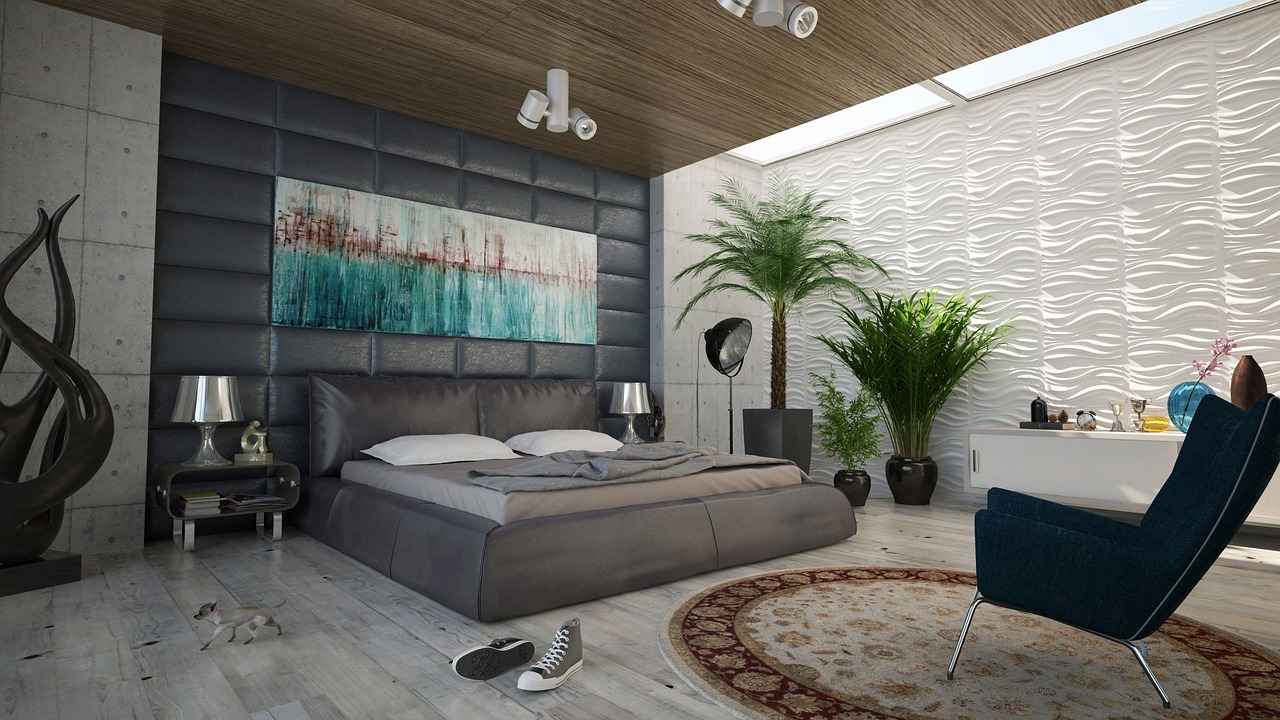
Bold Colors and Patterns for 2025
In the ever-evolving world of interior design, bold colors and unique patterns are set to dominate bedroom aesthetics in 2025. As homeowners increasingly seek to express their individuality, the use of vibrant hues and striking designs is becoming a significant trend. This shift not only enhances the visual appeal of bedrooms but also fosters a sense of creativity and personal expression.
Incorporating bold colors into bedroom design can transform a space from ordinary to extraordinary. These colors evoke emotions and set the mood for relaxation or energy, depending on the chosen palette. For instance, deep blues and rich greens can create a calming atmosphere, while vivid reds and yellows can invigorate the space.
Patterns are not just decorative; they tell a story and reflect the personality of the inhabitants. In 2025, expect to see a surge in geometric designs, floral motifs, and abstract art in bedding and wall decor. These patterns can serve as focal points, drawing the eye and adding depth to the room.
The trend of mixing and matching different colors and patterns is gaining traction. Homeowners are encouraged to be adventurous, combining stripes with florals or polka dots with geometric shapes. This eclectic approach allows for a personalized touch, making each bedroom a unique reflection of its owner’s style.
While bold colors are on the rise, there is also a significant trend towards earthy tones. These colors, such as terracotta, olive green, and mustard yellow, provide a warm and inviting backdrop that complements brighter accents. This balance creates a harmonious environment, ideal for rest and rejuvenation.
- Start Small: If you’re hesitant about using bold colors, consider starting with smaller items like cushions or throws.
- Accent Walls: An accent wall painted in a vibrant color can make a significant impact without overwhelming the space.
- Layering Textiles: Use a combination of patterned and solid-colored bedding to create visual interest while maintaining balance.
- Art and Decor: Incorporate artwork or decorative pieces that feature bold colors and patterns to enhance the overall aesthetic.
The trend of using bold colors and unique patterns in bedroom design for 2025 reflects a broader movement towards personalization and creativity in home decor. By embracing these elements, homeowners can create spaces that are not only visually stunning but also deeply personal. As this trend continues to evolve, it will undoubtedly inspire many to explore their own design preferences and express their individuality through their living spaces.
Embracing Earthy Tones
In recent years, the trend of incorporating earthy tones into interior design has gained significant traction, particularly in bedroom spaces. These hues, which include shades of brown, beige, terracotta, and muted greens, are celebrated for their ability to evoke a sense of warmth and tranquility. As we move into 2025, embracing earthy tones in bed design is not just about aesthetics; it’s about creating a sanctuary that promotes relaxation and rest.
One of the primary reasons for the popularity of earthy tones is their calming effect. In a world filled with chaos and constant stimulation, these colors provide a much-needed retreat. They mimic the natural world, bringing elements of the outdoors inside, which can enhance feelings of well-being and serenity. This connection to nature is particularly important as more people seek to create peaceful environments in their homes.
Additionally, earthy tones are incredibly versatile. They can be paired with a variety of textures and materials, allowing for a range of design possibilities. For instance, a rustic wooden bed frame in a warm walnut finish can be complemented by linen bedding in soft taupe or sage green. This combination not only looks appealing but also enhances the overall coziness of the space.
- Layering Textures: Incorporating different textures, such as chunky knit throws, soft cotton sheets, and plush pillows in earthy tones, adds depth and visual interest to the bedroom.
- Accent Pieces: Consider adding accent pieces like terracotta vases or woven baskets to further emphasize the earthy theme.
- Natural Light: Positioning the bed near windows to maximize natural light can enhance the warm tones, creating an inviting atmosphere throughout the day.
The influence of sustainability is also a driving force behind the rise of earthy tones in bed design. As consumers become more environmentally conscious, they are drawn to materials that are not only aesthetically pleasing but also sustainable. Manufacturers are responding by offering bedding made from organic cotton, linen, and recycled materials, all available in a palette of earthy shades.
Moreover, the psychological impact of color cannot be overlooked. Research indicates that earthy tones can reduce stress and anxiety levels, making them an ideal choice for bedroom decor. By choosing a color scheme that includes these tones, individuals can create a personal retreat that encourages restful sleep and rejuvenation.
In terms of trends, we can expect to see a rise in the use of earthy tones in not just bed linens but also in decorative elements such as wall art, rugs, and curtains. These colors can seamlessly blend with other design trends, including modern minimalism and bohemian styles, allowing for a personalized touch that reflects individual tastes.
In conclusion, the embrace of earthy tones in bed design for 2025 is more than just a passing trend; it represents a shift towards creating spaces that prioritize comfort, sustainability, and well-being. By integrating these warm, natural colors into bedroom decor, individuals can cultivate a serene environment that promotes relaxation and restful sleep.
Geometric Patterns in Bed Linens
In recent years, geometric patterns have emerged as a significant trend in the world of interior design, particularly in bed linens and upholstery. These patterns not only add a touch of modernity but also serve as a means of self-expression in personal spaces. As we look towards 2025, the incorporation of geometric designs in bedding is set to redefine traditional aesthetics, making them more dynamic and visually appealing.
Geometric patterns are characterized by their clean lines and bold shapes, which can range from simple triangles and squares to intricate tessellations. This versatility allows homeowners to choose designs that best fit their personal style and the ambiance they wish to create in their bedrooms. For instance, a minimalist approach with subtle geometric shapes can enhance a calming environment, while vibrant, complex patterns can energize a space.
One of the key advantages of using geometric patterns in bed linens is their ability to complement various design styles. Whether your bedroom is styled in a contemporary, industrial, or even bohemian theme, geometric patterns can seamlessly integrate with existing decor. For example, pairing a geometric duvet cover with solid-colored throw pillows can create a balanced look that is both stylish and inviting.
| Pattern Type | Style Compatibility | Color Palette |
|---|---|---|
| Simple Geometric | Modern, Minimalist | Monochrome, Pastels |
| Complex Geometric | Eclectic, Bohemian | Bold, Vibrant |
| Abstract Geometric | Contemporary, Artistic | Mixed Colors |
Additionally, the use of geometric patterns can contribute to a sense of balance and harmony in the bedroom. The repetition of shapes creates a rhythmic flow that can be visually soothing. This is particularly important in a space designed for relaxation and rest. When combined with soft fabrics, such as cotton or linen, geometric patterns can enhance the overall comfort of the bedding, making it not only aesthetically pleasing but also inviting.
Moreover, the trend of geometric patterns extends beyond bed linens to include upholstery, curtains, and even wall art. This holistic approach to design allows homeowners to create a cohesive look throughout their bedrooms. By selecting complementary geometric designs across various elements, one can achieve a well-coordinated and stylish environment.
As consumers increasingly prioritize personalization in their living spaces, geometric patterns offer a unique opportunity to express individuality. Whether it’s through bold colors or intricate designs, these patterns can reflect personal tastes and lifestyle choices. The ability to mix and match different geometric elements also encourages creativity, allowing for unique interpretations of modern design.
In conclusion, the use of geometric patterns in bed linens and upholstery is not merely a fleeting trend but a lasting influence on modern interior design. As we move toward 2025, expect to see these patterns continue to evolve, offering fresh and exciting ways to enhance bedroom aesthetics. With their versatility and ability to create visual interest, geometric patterns are sure to remain a favorite among designers and homeowners alike.

Multi-Functional Beds for Small Spaces
As urban living becomes increasingly prevalent, the demand for multi-functional beds is surging. These innovative designs are essential for maximizing space in compact living environments, making them a practical choice for city dwellers and those with limited square footage. In this section, we will explore the various types of multi-functional beds, their benefits, and how they can transform small spaces into functional and stylish areas.
Multi-functional beds are not just a trend; they are a necessity for those living in small apartments or studios. These beds serve multiple purposes, allowing homeowners to make the most of their limited space. Here are a few reasons why they are increasingly popular:
- Space Efficiency: Multi-functional beds often come with built-in storage solutions, enabling users to keep their living areas organized without sacrificing style.
- Versatility: Many designs can easily convert from a bed to a sofa or even a desk, providing flexibility for different needs throughout the day.
- Cost-Effectiveness: Investing in a multi-functional bed can save money in the long run by eliminating the need for additional furniture.
There are several types of multi-functional beds available on the market, each designed to cater to specific needs:
- Storage Beds: These beds feature built-in drawers or compartments underneath, perfect for storing bedding, clothes, or other items.
- Murphy Beds: Also known as wall beds, these can be folded up against the wall when not in use, freeing up floor space.
- Sofa Beds: Ideal for hosting guests, sofa beds can be used as a couch during the day and transformed into a bed at night.
- Loft Beds: Elevating the bed allows for additional space underneath, which can be utilized as a workspace or a cozy sitting area.
Choosing a multi-functional bed can significantly enhance the functionality of your living space. Here are some key benefits:
- Maximized Space: By combining multiple functions into one piece of furniture, you can free up valuable floor space.
- Enhanced Aesthetics: These beds often come in modern designs that can elevate the overall look of your room.
- Improved Organization: Built-in storage options help keep your space tidy and clutter-free.
Selecting the right multi-functional bed involves considering your specific needs and the layout of your space. Here are some tips:
- Assess Your Space: Measure your room to determine how much space you can allocate for a bed and its additional functions.
- Consider Your Lifestyle: Think about how often you will need to convert the bed and whether you require additional storage.
- Choose Quality Materials: Look for durable materials that will withstand daily use and provide comfort.
In conclusion, as urban living continues to rise, the popularity of multi-functional beds is likely to grow. These innovative solutions not only make the most of compact living environments but also offer flexibility and style. Whether you opt for a storage bed, a Murphy bed, or a sofa bed, investing in a multi-functional design can significantly enhance your living experience.
Storage Solutions in Bed Design
In today’s fast-paced world, where urban living often means limited space, have become increasingly essential. As we look towards 2025, innovative beds that incorporate built-in storage options are not only practical but also stylish, allowing homeowners to maximize their space without sacrificing aesthetics. This article explores the various storage solutions available in modern bed designs, highlighting their benefits and versatility.
Beds with built-in storage options, such as drawers or under-bed compartments, are a fantastic way to keep bedrooms organized. These designs help eliminate clutter, providing a dedicated space for items that would otherwise take up valuable floor space. With the rise of minimalism and functional living, these storage beds cater to the need for both style and utility, making them a popular choice for many homeowners.
- Under-bed Drawers: These are spacious drawers that slide out easily, perfect for storing extra bedding, seasonal clothing, or shoes.
- Lift-up Mattresses: Beds with lift-up mechanisms allow the mattress to be raised, revealing a large storage compartment underneath, ideal for bulky items.
- Headboard Storage: Some modern designs incorporate shelves or compartments within the headboard, providing additional space for books, decor, or personal items.
- Ottoman Beds: These multifunctional beds serve as both a sleeping area and a storage unit, with a hinged top that opens to reveal ample storage space.
For those living in studio apartments or smaller homes, multi-functional beds are a game changer. These beds not only serve as a comfortable sleeping area but also incorporate various storage solutions that help keep the living space tidy. By utilizing vertical space and innovative designs, such beds can transform a cramped room into a functional and stylish sanctuary.
- Space Efficiency: By integrating storage into the bed, homeowners can free up closet and drawer space for other essentials.
- Organization: Built-in storage helps keep items neatly tucked away, reducing visual clutter and creating a more serene environment.
- Enhanced Aesthetics: Modern storage beds come in various styles and finishes, allowing them to complement any bedroom decor.
- Cost-effective: Investing in a bed with storage can save money in the long run by eliminating the need for additional furniture pieces.
When selecting a bed with built-in storage, consider the following factors:
- Size: Ensure the bed fits comfortably in your space without overwhelming the room.
- Storage Capacity: Assess how much storage you need and choose a bed that meets those requirements.
- Style: Look for a design that matches your aesthetic preferences, whether modern, traditional, or somewhere in between.
- Material: Opt for durable materials that will withstand daily use while still looking great.
In conclusion, beds with built-in storage options are not only practical but also essential for maintaining an organized and stylish bedroom. As we move towards 2025, the demand for innovative and multi-functional furniture will continue to grow, making these storage solutions an integral part of modern living. By choosing the right storage bed, you can enhance both the functionality and aesthetics of your space, creating a peaceful retreat that meets all your needs.
Convertible Bed Designs
are rapidly gaining traction in modern home decor, especially for those living in small spaces or seeking flexible solutions for guest accommodations. These innovative beds seamlessly transition from a stylish sofa to a comfortable bed, offering both functionality and aesthetic appeal. Their versatility makes them an ideal choice for studio apartments, guest rooms, and even multi-purpose spaces within larger homes.
One of the primary reasons for the growing popularity of convertible beds is their space-saving capabilities. In urban settings where every square foot counts, these beds provide a practical solution without sacrificing style. They allow homeowners to maximize their living areas while maintaining a chic and organized appearance.
Convertible beds come in a variety of designs, catering to different tastes and needs. Some popular styles include:
- Sofa Beds: These classic designs feature a sofa that folds out into a bed, making them perfect for living rooms that double as guest rooms.
- Murphy Beds: Wall-mounted beds that fold down when needed, freeing up floor space during the day.
- Daybeds: These versatile pieces can function as both a sofa and a bed, often styled with decorative pillows for a cozy look.
Modern convertible beds are designed with additional features that enhance their usability:
- Integrated Storage: Many models include built-in drawers or compartments, allowing users to store bedding and other items conveniently.
- Easy Conversion Mechanisms: Advanced designs ensure that transitioning from sofa to bed is a hassle-free process, often with minimal effort required.
- Quality Materials: With a focus on durability and comfort, many convertible beds are made from high-quality materials, ensuring long-lasting use and a good night’s sleep.
As sustainability becomes a key consideration for many consumers, eco-friendly convertible beds are also on the rise. Manufacturers are increasingly using sustainable materials, such as reclaimed wood and organic fabrics, to create stylish and environmentally responsible products. This trend not only appeals to eco-conscious buyers but also contributes to healthier living spaces.
Convertible beds are not just functional; they also play a significant role in enhancing the overall aesthetic of a room. Available in various styles, colors, and fabrics, these beds can be customized to fit any decor theme. Whether you prefer a modern minimalist look or a more traditional style, there’s a convertible bed that can complement your interior design.
In summary, offer an exceptional blend of style, functionality, and sustainability, making them a smart choice for contemporary living. Their ability to transform spaces while providing comfort makes them ideal for anyone looking to optimize their home environment. As trends continue to evolve, these versatile beds will likely remain a staple in modern interior design.
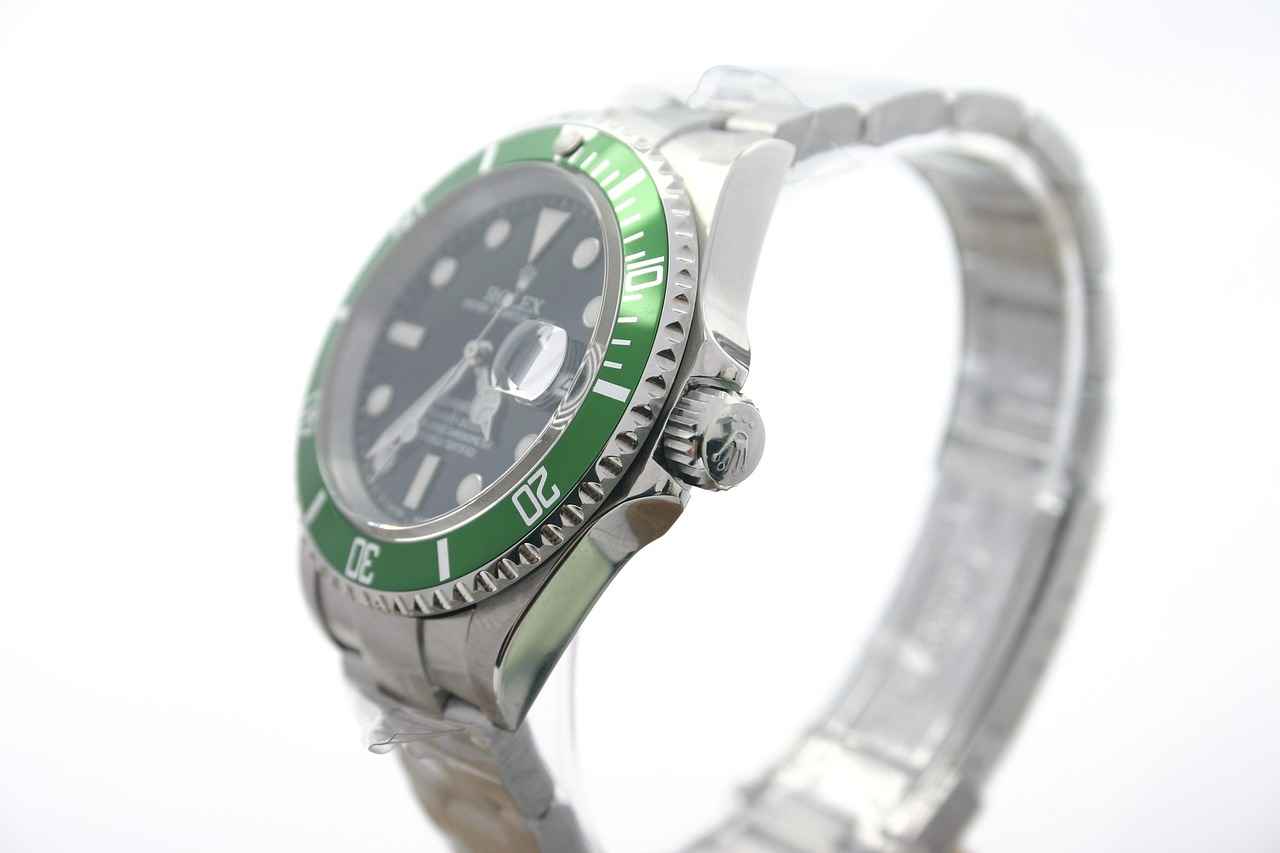
Luxury and Comfort Trends in Bedding
In the realm of sleep, luxury and comfort are paramount. As we delve into the trends for 2025, it becomes increasingly clear that the choice of bedding materials plays a crucial role in creating a sleep sanctuary. The demand for high-quality bedding has surged, as individuals seek to enhance their sleep experience and transform their bedrooms into inviting retreats.
One of the most significant trends in luxury bedding is the emphasis on high-thread-count sheets. These sheets, typically made from cotton, offer a smoother, softer touch that enhances the overall sleep experience. A higher thread count often translates to greater durability and a luxurious feel against the skin. Consumers are now more informed and willing to invest in quality, understanding that this choice can lead to improved sleep quality.
In addition to sheets, plush comforters have become a staple in luxury bedding. These comforters not only provide warmth but also add a layer of visual appeal to the bed. Available in various materials such as down, synthetic fills, and organic options, plush comforters cater to diverse preferences. The right comforter can create a cozy atmosphere, inviting users to snuggle in and relax.
Layering different bedding elements has emerged as a popular trend. Combining sheets, comforters, and decorative throws allows for a personalized touch while enhancing comfort. This method not only adds depth to the bedding aesthetic but also provides flexibility in temperature regulation. For instance, a light blanket can be added during warmer months, while heavier layers can be introduced in colder seasons.
Another key aspect of luxury bedding is the incorporation of textural variety. Mixing materials such as silk, linen, and cotton can create a visually appealing and tactile experience. This approach not only elevates the design but also enhances comfort. Textured pillows and throws can add a layer of coziness, making the bed an inviting focal point in any bedroom.
With the growing awareness of sustainability, eco-friendly bedding materials are gaining traction. Brands are now offering bedding made from organic cotton, bamboo, and recycled materials. These options not only provide comfort but also align with the values of environmentally conscious consumers. Investing in sustainable bedding is a way to enjoy luxury while being mindful of the planet.
As consumers seek unique experiences, personalization in bedding design has become increasingly popular. Customizable options allow individuals to choose colors, patterns, and materials that reflect their personal style. This trend caters to the desire for individuality, enabling consumers to create a sleep environment that resonates with their aesthetic preferences.
Luxury bedding is not limited to sheets and comforters; the inclusion of sleep accessories such as high-quality pillows and mattress protectors is essential. Pillows that provide proper support and comfort can significantly impact sleep quality. Additionally, mattress protectors that are both functional and luxurious can enhance the lifespan of the mattress while contributing to a comfortable sleep environment.
As we look toward 2025, the trends in luxury bedding reflect a growing understanding of the importance of quality materials and personal comfort. By investing in high-thread-count sheets, plush comforters, and a variety of textures, individuals can create a cozy and inviting sleep environment that promotes relaxation and rejuvenation. The evolution of bedding materials and designs continues to cater to the modern consumer’s needs, ensuring that comfort and luxury remain at the forefront of sleep innovation.
Investing in Quality Bedding
Investing in quality bedding is not merely a choice; it is a commitment to enhancing your sleep experience and elevating your bedroom’s aesthetics. The right bedding can transform a simple bed into a luxurious retreat, combining comfort with style to create an inviting atmosphere that promotes relaxation and rejuvenation.
When selecting bedding, consider the materials used. High-thread-count cotton sheets, for instance, offer a soft, breathable feel that can significantly improve your sleep quality. Natural fibers such as linen and bamboo are also gaining popularity due to their moisture-wicking properties and durability. These materials not only provide comfort but also contribute to a healthier sleep environment by regulating temperature and reducing allergens.
Additionally, the design of your bedding plays a crucial role in the overall aesthetics of your bedroom. Bold colors and unique patterns can express your personal style, while neutral tones create a calming effect. Incorporating a mix of textures, such as silky sheets paired with a fluffy duvet, can add depth and visual interest, making your bed a focal point of the room.
Moreover, investing in quality bedding is an investment in your health. Studies have shown that a comfortable sleep environment can lead to improved sleep quality, which is essential for overall well-being. Quality bedding can help alleviate common sleep disturbances, such as overheating or discomfort from rough fabrics. By choosing the right bedding, you can create an environment that promotes restful sleep and rejuvenation.
Another aspect to consider is the maintenance of your bedding. High-quality materials often come with care instructions that, when followed, can extend the lifespan of your investment. Regular washing with gentle detergents and proper drying techniques can keep your bedding looking and feeling fresh for years to come.
Furthermore, the trend towards sustainability has led many consumers to seek out eco-friendly bedding options. Brands are increasingly offering bedding made from organic materials and recycled fabrics, allowing you to enhance your sleep experience while also being mindful of the environment. This not only supports sustainable practices but also ensures that your bedding is free from harmful chemicals.
In summary, investing in quality bedding is essential for those seeking to enhance their sleep quality and bedroom aesthetics. By choosing the right materials, designs, and sustainable options, you can create a luxurious sleeping environment that reflects your personal style and supports your health. The benefits of quality bedding extend beyond mere comfort; they encompass improved sleep, better health, and a more inviting space that you can enjoy every day.
| Benefits of Quality Bedding | Details |
|---|---|
| Improved Sleep Quality | Enhances comfort and reduces sleep disturbances. |
| Enhanced Aesthetics | Transforms your bedroom into a stylish retreat. |
| Health Benefits | Promotes better sleep posture and reduces allergens. |
| Sustainability | Supports eco-friendly practices with organic materials. |
- Choose Natural Fibers: Opt for materials like cotton, linen, and bamboo.
- Mix Textures: Combine different fabrics for a cozy feel.
- Invest in Durability: Look for bedding that withstands wear and tear.
- Follow Care Instructions: Maintain your bedding for longevity.
Textural Variety in Bedding
When it comes to creating a cozy and inviting bedroom, plays a crucial role. The combination of different materials not only enhances the visual appeal of the bed but also contributes significantly to the overall comfort and relaxation it provides. In this section, we will explore the various textures that can be incorporated into bedding and how they can transform your sleeping space into a tranquil retreat.
Texture is an essential element in interior design, especially in bedding. It creates a sensory experience that can evoke feelings of warmth and comfort. By layering different textures, you can achieve a more dynamic and inviting look. For instance, pairing silky sheets with a fluffy duvet not only adds depth but also invites you to snuggle in. The contrast between smooth and plush materials can significantly enhance your overall sleeping experience.
- Silky Sheets: These sheets offer a luxurious feel against the skin, enhancing the overall comfort of your bed.
- Fluffy Duvets: A fluffy duvet provides warmth and a sense of coziness, making it an ideal choice for colder months.
- Knitted Throws: Adding a knitted throw can introduce a tactile element that adds warmth and visual interest.
- Quilted Bedspreads: Quilted patterns can add dimension and a touch of elegance to your bedding ensemble.
- Linen Fabrics: Linen is breathable and has a natural texture that can create a relaxed, laid-back vibe in your bedroom.
To achieve the ultimate cozy bed, consider layering various textures. Start with a soft mattress protector, followed by silky sheets, and then add a fluffy duvet or comforter on top. You can finish the look with a knitted throw or decorative pillows in different fabrics. This layering technique not only elevates the aesthetic appeal but also allows for a customizable sleeping environment. You can adjust the layers based on the season or your personal preference, ensuring maximum comfort year-round.
While textures are vital, coordinating colors can enhance the overall effect. Choose a color palette that complements your bedding textures. For example, soft pastels can create a serene atmosphere, while bold colors can energize the space. Mixing different textures in similar hues can create a harmonious look, while contrasting colors can add excitement and visual interest.
Incorporating various textures in your bedding not only enhances the visual appeal but also contributes to improved sleep quality. Different materials can regulate temperature, wick away moisture, and provide a comfortable sleeping surface. For instance, breathable linen can help keep you cool during hot nights, while fluffy duvets provide warmth during colder months. This variety allows you to tailor your bedding to your specific comfort needs, leading to a better night’s sleep.
In conclusion, the incorporation of diverse textures in bedding is a trend that enhances both the aesthetics and comfort of your bedroom. By thoughtfully selecting and layering different materials, you can create a space that is not only visually appealing but also promotes relaxation and restful sleep. Whether you prefer the luxurious feel of silky sheets or the cozy warmth of a fluffy duvet, embracing textural variety will undoubtedly make your bed a focal point of relaxation.
Frequently Asked Questions
- What are the key trends in bed design for 2025?
In 2025, expect to see a rise in modern minimalism, smart beds with adjustable features, and a focus on sustainable materials. Bold colors and geometric patterns will also play a significant role in personalizing bedroom aesthetics.
- How do smart beds enhance sleep quality?
Smart beds utilize technology to adjust firmness and track sleep patterns, offering personalized comfort. They often integrate with sleep apps, providing insights that help you optimize your sleep environment for better rest.
- What are the benefits of using adjustable firmness in beds?
Adjustable firmness can alleviate health issues like back pain and sleep apnea by promoting better sleep posture and circulation. This customization allows for a tailored sleeping experience based on individual needs.
- Why is sustainability important in bed design?
Sustainability in bed design is crucial as it reflects a growing awareness of environmental impact. Manufacturers are prioritizing eco-friendly materials that provide both comfort and style without harming the planet.
- What features should I look for in multi-functional beds?
When choosing multi-functional beds, consider options like built-in storage solutions and convertible designs. These features maximize space and provide versatility, making them ideal for small living areas.
